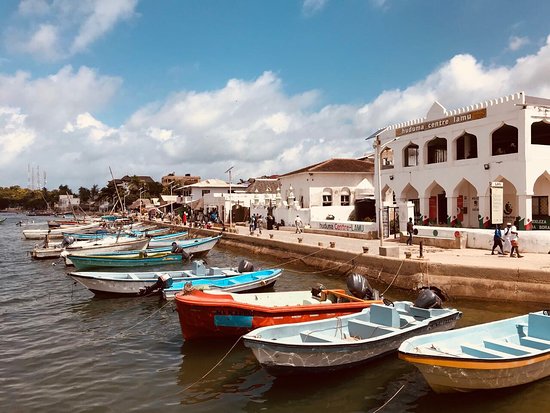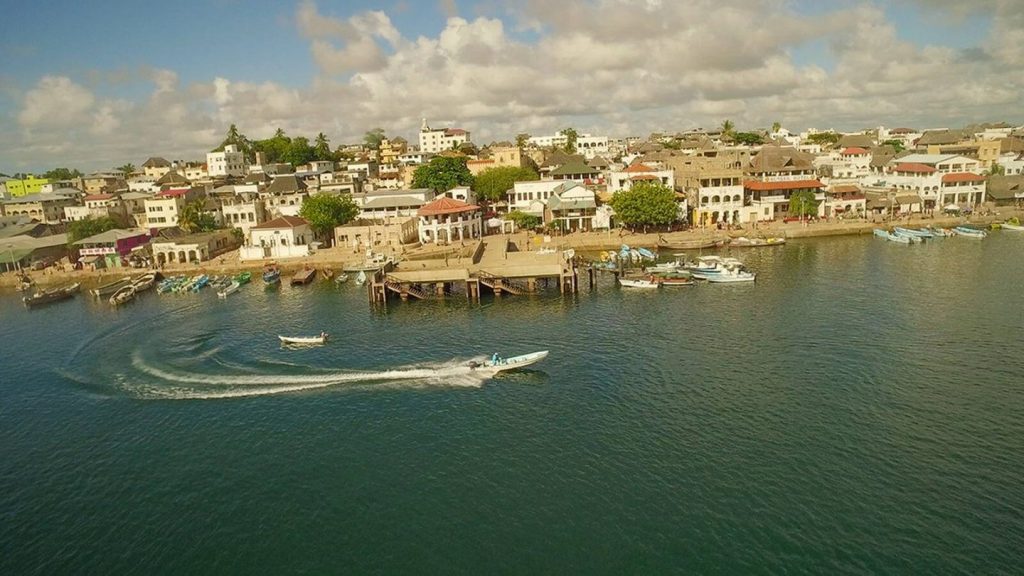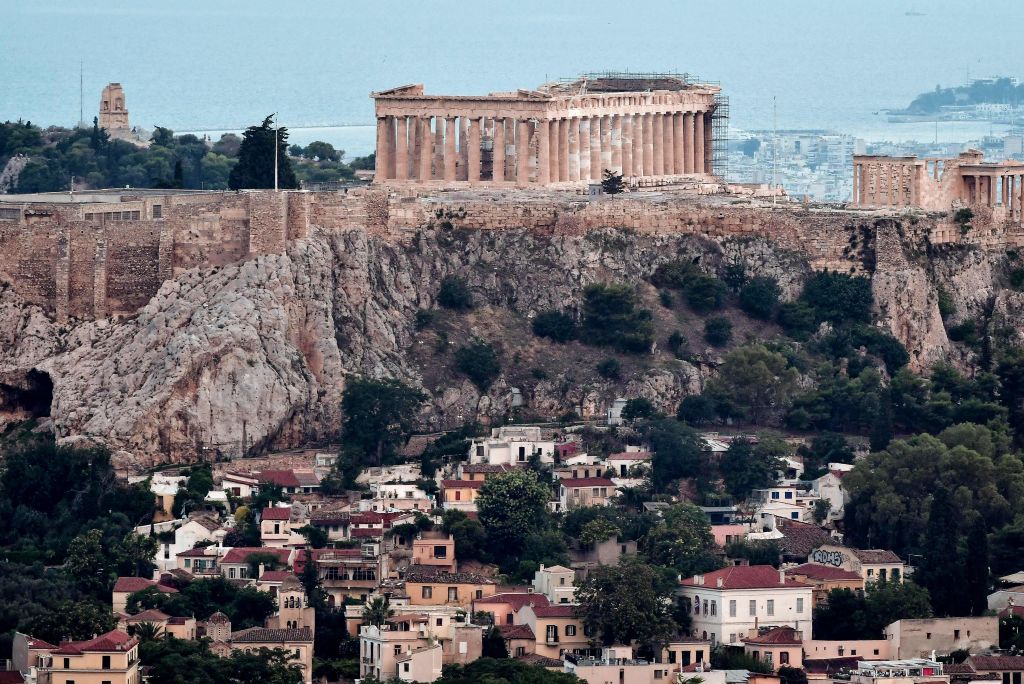Lamu Old Town, a captivating coastal settlement nestled in the Lamu Archipelago off the coast of Kenya, is a living testament to the rich tapestry of Swahili, Arab, Persian, Indian, and European influences that have shaped the region for centuries. Recognized as a UNESCO World Heritage Site since 2001, this unique destination transports visitors on a journey through time, offering a glimpse into the vibrant history, architectural wonders, cultural diversity, and ongoing preservation efforts that make Lamu Old Town a remarkable destination.
As you wander through the narrow, winding alleys of Lamu Old Town, you’ll be enchanted by the harmonious blend of Swahili, Arab, and European architectural styles, each leaving their indelible mark on the town’s design and aesthetics. From the grandeur of the Lamu Fort, a 19th-century fortress that once served as the town’s administrative center, to the intricate wooden balconies and carved doors of the traditional Swahili houses, Lamu Old Town is a feast for the eyes and a treasure trove of architectural marvels.
Beyond its architectural wonders, Lamu Old Town is a melting pot of cultures, with Swahili, Arab, Persian, Indian, and European influences shaping the town’s vibrant social and cultural fabric. This rich cultural diversity is evident in the town’s customs, traditions, and festivals, such as the annual Lamu Cultural Festival, which celebrates the town’s unique heritage and traditions.
Preserving the essence of Lamu Old Town is a top priority for the local community and the Kenyan government, who recognize the town’s cultural and historical significance. Ongoing preservation efforts, supported by UNESCO and other international organizations, aim to safeguard the town’s architectural and cultural heritage, while also promoting sustainable development and community engagement.
In this article, we delve into the vibrant history, architectural wonders, cultural diversity, and ongoing preservation efforts of Lamu Old Town, offering a comprehensive guide to this remarkable destination. Whether you’re a history buff, a culture enthusiast, or simply looking for a unique and memorable travel experience, Lamu Old Town is a destination that is sure to captivate and inspire.
History of Lamu Old Town
Lamu Old Town, located on Lamu Island off the coast of Kenya, is a well-preserved Swahili settlement that dates back to at least the twelfth century. It is recognized as a UNESCO World Heritage Site and is renowned for being one of the oldest towns in Kenya, with a rich cultural and historical significance. The town’s development was influenced by a unique fusion of Swahili, Arabic, Persian, Indian, and European building styles, resulting in a distinct and visually striking architectural landscape.
Lamu’s ‘Golden Age’ was during its years as an Omani protectorate from the late seventeenth century to the early nineteenth century, when it became a center of poetry, politics, arts and crafts, literature, scholarship, and trade. From the middle of the nineteenth century, Lamu was under the political influence of the sultan of Zanzibar, and later came under German and British colonial rule. Despite these changes in governance, Lamu has maintained its cultural and historical significance, and is today a living town with a history dating back to over 700 hundred years.
The town’s layout and architecture are representative of a fusion of different cultures and time periods, with narrow doors and magnificent stone buildings with curved doors being emblematic of Swahili, Arabic, Persian, Indian, and European building styles. The buildings in Lamu Old Town are constructed in traditional mangrove timber and coral stone, and are well-preserved, carrying a long history that represents the development of Swahili building technology, based on coral, lime, and mangrove poles.
Lamu Old Town is home to 23 mosques, including the Riyadha Mosque, making it a site of vital importance to the Muslim faith and hosting several religious celebrations. The town’s rich cultural heritage is also evident in its vibrant traditions, customs, and festivals, such as the annual Lamu Cultural Festival.
Despite its historical significance, Lamu Old Town is threatened by uncontrolled development, particularly due to the anticipated increase of tourism in the area. Proposed construction, including a port, a railway line, airports, major highways, an oil refinery, an oil pipeline, and tourist resorts, may have an impact on the cultural integrity of the town. However, efforts are being made to raise local and international awareness about the significance of Lamu Old Town and to advocate for its protection.
In summary, Lamu Old Town is a well-preserved Swahili settlement that dates back to at least the twelfth century, with a rich cultural and historical significance. Its unique fusion of Swahili, Arabic, Persian, Indian, and European building styles has resulted in a distinct and visually striking architectural landscape, making it a living town with a history dating back to over 700 hundred years. Despite being threatened by uncontrolled development, efforts are being made to raise local and international awareness about the significance of Lamu Old Town and to advocate for its protection.
Architectural Heritage
The architectural heritage of Lamu Old Town is a unique fusion of Swahili, Arabic, Persian, Indian, and European styles, reflecting the diverse cultural influences that have shaped the town over centuries. The town’s layout and buildings, constructed using traditional materials like coral stone and mangrove timber, showcase a blend of architectural elements from different cultures and time periods, such as narrow doors, magnificent stone buildings with curved doors, and elaborately carved Arabic doors. These architectural features are not only aesthetically pleasing but also serve as a testament to the town’s historical significance and cultural richness.
Lamu Old Town’s architectural heritage is not just about the physical structures but also about the preservation and conservation efforts that aim to maintain the authenticity and integrity of the town’s built environment. The town’s architectural treasures, including the Lamu Fort, the Lamu Museum, and the numerous finely carved Arabic doors found throughout the town, are vital components of its cultural landscape and contribute to its status as a UNESCO World Heritage Site.
Despite the challenges posed by uncontrolled development and the influx of foreign investors buying and restoring properties in the town, these efforts have also played a role in preserving the architectural heritage of Lamu Old Town. Foreign investors have been instrumental in restoring historic buildings to their former glory, thereby contributing to the conservation of the town’s unique architectural character and preventing the gradual destruction of its heritage due to lack of maintenance by local owners.
In essence, the architectural heritage of Lamu Old Town is a blend of cultural influences that have stood the test of time, reflecting the town’s rich history, cultural diversity, and unique identity. Efforts to balance development with conservation, preserve traditional architectural styles, and raise awareness about the town’s significant cultural heritage are crucial in safeguarding the architectural legacy of this UNESCO World Heritage Site.
Cultural Diversity
Lamu Old Town, located in Kenya, is an extremely well-preserved Swahili settlement and a UNESCO World Heritage Site. It is renowned for being one of the oldest towns in Kenya, with a rich cultural heritage that reflects the fusion of different cultures and time periods. The town’s layout and architecture, characterized by narrow doors and magnificent stone buildings with curved doors, are emblematic of Swahili, Arabic, Persian, Indian, and European building styles.
Lamu Old Town has a history dating back to at least the twelfth century, with its ‘Golden Age’ during its years as an Omani protectorate from the late seventeenth century to the early nineteenth century. At this time, it became a center of poetry, politics, arts and crafts, literature, scholarship, and trade. From the middle of the nineteenth century, Lamu was under the political influence of the sultan of Zanzibar, and later came under German and British colonial rule[3]. Despite these changes in governance, Lamu has maintained its cultural and historical significance, and is today a living town with a history dating back to over 700 hundred years.
The town’s cultural heritage is evident in its vibrant traditions, customs, and festivals, such as the annual Lamu Cultural Festival, which celebrates the town’s unique heritage and traditions. The town’s architectural treasures, including the Lamu Fort, the Lamu Museum, and the numerous finely carved Arabic doors found throughout the town, are vital components of its cultural landscape and contribute to its status as a UNESCO World Heritage Site.
However, Lamu Old Town is threatened by uncontrolled development, particularly due to the anticipated increase of tourism in the area. Proposed construction, including a port, a railway line, airports, major highways, an oil refinery, an oil pipeline, and tourist resorts, may have an impact on the cultural integrity of the town. Efforts are being made to raise local and international awareness about the significance of Lamu Old Town and to advocate for its protection.
Traditional Practices
The town of Lamu, located on Lamu Island off the coast of Kenya, is one of the best-preserved examples of Swahili culture in East Africa. It is a UNESCO World Heritage Site and a well-preserved settlement that dates back to at least the twelfth century. The town is characterized by simplicity of structural forms enriched by features such as inner courtyards, verandahs, and elaborately carved wooden doors.
The Swahili culture of Lamu represents the interaction between the Bantu, Arabs, Persians, Indians, and Europeans, resulting in a unique fusion of architectural styles[1]. The town’s cultural heritage is evident in its vibrant traditions, customs, and festivals, such as the annual Lamu Cultural Festival, which celebrates the town’s unique heritage and traditions.
The town’s architectural treasures, including the Lamu Fort, the Lamu Museum, and the numerous finely carved Arabic doors found throughout the town, are vital components of its cultural landscape and contribute to its status as a UNESCO World Heritage Site.
However, Lamu Old Town is threatened by uncontrolled development, particularly due to the anticipated increase of tourism in the area. Proposed construction, including a port, a railway line, airports, major highways, an oil refinery, an oil pipeline, and tourist resorts, may have an impact on the cultural integrity of the town. Efforts are being made to raise local and international awareness about the significance of Lamu Old Town and to advocate for its protection.
Historic Landmarks
Lamu Old Town is a historic town located on Lamu Island off the coast of Kenya, in the Indian Ocean. It is renowned for being one of the oldest towns in Kenya and an extremely well-preserved Swahili settlement. The town has a rich history dating back to at least the twelfth century, when it was an important trading center in Islamic coastal East Africa. Lamu Old Town is the cradle of Swahili culture and an important religious center, with several historic sites including the German Post Office, the Lamu Museum, housed in an old Swahili warehouse, and the Lamu Fort.
The buildings of Lamu Old Town are a fusion of African, Arabic, Indian, and Persian styles, organized around narrow winding streets. Traditional techniques and local resources including coral, lime, and mangrove poles were used to shape the historic fabric of the city. Many buildings are distinguished by carved wooden doors and some are decorated with wall paintings, sculptural plasterwork, or rare and special objects brought to Lamu from various places along the trade routes.
Lamu Old Town is a UNESCO World Heritage Site, recognized for its cultural significance and unique heritage. The town’s cultural heritage is evident in its vibrant traditions, customs, and festivals, such as the annual Lamu Cultural Festival, which celebrates the town’s unique heritage and traditions. However, the town is threatened by uncontrolled development, particularly due to the anticipated increase of tourism in the area. Proposed construction, including a port, a railway line, airports, major highways, an oil refinery, an oil pipeline, and tourist resorts, may have an impact on the cultural integrity of the town.
Efforts are being made to raise local and international awareness about the significance of Lamu Old Town and to advocate for its protection. The World Monuments Fund has included Lamu Old Town on the 2014 World Monuments Watch to raise awareness about its significant cultural heritage and open up the dialogue about the cost of rapid economic development. Watch Day at Lamu Old Town, held in April 2014, consisted of a week-long series of events designed to increase awareness of the invaluable sites throughout the town and advocate for their protection.
Festivals and Events
The town of Lamu, located on Lamu Island off the coast of Kenya, hosts various festivals and events that celebrate its rich cultural heritage and traditions. These festivals attract visitors from around the globe and offer a unique opportunity to immerse in the vibrant atmosphere of Lamu. Here are some of the festivals and events held in Lamu:
- Lamu Cultural Festival: This annual event showcases the unique cultural heritage of the Lamu people and typically takes place in November. The festival features traditional activities such as music, dance, art, food, and sports, including dhow races, taarab music performances, poetry recitations, and exhibitions of local arts and crafts. It provides an opportunity to explore the narrow, winding streets of Lamu Old Town, admire the Swahili architecture, and engage with the local community to learn about their customs and traditions.
- Lamu Food Festival: This festival is part of the annual cultural celebrations in Lamu and offers visitors a taste of Swahili life. It features traditional Swahili cuisine, including mouth-watering seafood dishes like grilled fish and crab, as well as Swahili delicacies like biryani and pilau. Visitors can indulge in the vibrant flavors and aromas of Swahili cuisine during this festival.
- Lamu Arts Festival: This festival celebrates the artistic talents of the region, showcasing unique Swahili crafts and artwork. Local artisans demonstrate their skills in wood carving, textile weaving, beadwork, and other traditional crafts, providing an opportunity for visitors to acquire handmade souvenirs and appreciate the local artistry.
- Lamu Maulid Festival: This festival is another significant cultural event in Lamu, focusing on the celebration of Maulid, which commemorates the birth of the Prophet Muhammad. It is a time for religious and cultural observances, often including processions, prayers, and community gatherings.
- Lamu Yoga Festival: This festival promotes wellness and mindfulness, offering yoga enthusiasts a chance to participate in yoga sessions in the serene and picturesque setting of Lamu Island. It provides a unique opportunity to connect with nature and rejuvenate the mind, body, and spirit.
These festivals and events in Lamu showcase the diverse cultural tapestry of the region, offering visitors a glimpse into the rich heritage, traditions, and vibrant community life of this historic town.
Challenges and Conservation Efforts

Lamu Old Town, a UNESCO World Heritage Site since 2001, faces various challenges that threaten its cultural heritage and conservation efforts. The town has experienced a decline in its tourism sector, which has affected its economy. Additionally, conflicting development interests around the LAPSSET project, a massive infrastructure development project, pose a significant threat to the preservation of the town’s historical buildings and cultural heritage.
A study conducted by Mohamed et al. (2023) identified several challenges that hinder effective community participation in governance standard setting initiatives for mangrove management in Lamu County. These challenges include poor policy implementation, lack of adequate resources, poor policy enforcement, lack of clarity on operational rules, and overregulation. These barriers can prevent the development of sustainable and equitable mangrove management practices.
The lack of community involvement in decision-making processes regarding mangrove access, utilization, and benefit sharing is also a significant challenge. Decisions are often made based on a top-down approach, with minimal engagement from the community, which can lead to doubts about the sustainability of mangrove management.
The proposed development of a new port at Magagoni Creek is expected to bring significant changes to Lamu Old Town. The increase in population due to the port’s development will place further strain on the town’s already dilapidated infrastructure, such as the drainage system, water supplies, and waste disposal policy. This could lead to increased health and environmental hazards, as well as further depletion of water supplies.
To address these challenges, it is recommended to establish a community decision-making mechanism to help in decision-making processes and build local capacity. Upscaling trainings and developing synergies with other community-led conservation institutions can also help improve governance structures and compare results.
The challenges facing Lamu Old Town’s conservation efforts and community participation in governance standard setting initiatives require concerted efforts from government and non-governmental organizations to improve capacity building, access to resources, and decision-making spaces. Addressing these challenges is crucial for the sustainable management of mangrove forests and the preservation of Lamu Old Town’s cultural heritage.
Tourism and Economic Impact
Lamu Old Town, located on Lamu Island off the coast of Kenya, is the oldest and best-preserved Swahili settlement in East Africa, with a rich cultural heritage and traditional functions. The town’s economy has historically been based on tourism and fishing, with the majority of buildings being used for commercial purposes. However, the town faces challenges such as uncontrolled development for anticipated tourism growth, which may impact its cultural integrity.
Tourism has played a significant role in the town’s economy, with the first tourists arriving in the 1960s and bringing economic life back to the area after a 300-year period of stagnation. Tourism was initially more interactive, with local families hosting tourists in their homes and offering them food and accommodations at low rates. However, the nature of tourism has changed over time, with the town now catering to a more diverse range of tourists and offering various amenities.
The COVID-19 pandemic had a significant impact on Lamu Old Town, with the cancellation of major events such as the Lamu Cultural Festival and a decline in visitor numbers. A project aimed at addressing the socio-economic impacts of COVID-19 on tourism and heritage was implemented in Lamu Old Town, with support from UNESCO, the Kenya Tourism Board, and the National Museums of Kenya. The project aimed to restore pride in the town’s status as a World Heritage site and improve public spaces, access, and environmental sustainability.
Despite the challenges, Lamu Old Town remains an important cultural and historical site, with a unique blend of African, Arabic, Indian, and Persian architectural styles and a rich cultural heritage. The town’s preservation and sustainable development are crucial for maintaining its cultural integrity and ensuring its continued significance as a World Heritage site.
Personal Experiences
Lamu Old Town, located on Lamu Island off the coast of Kenya, is a well-preserved Swahili settlement that dates back to at least the twelfth century. It is the cradle of Swahili culture and an important religious center, with several historic sites including the German Post Office, the Lamu Museum, housed in an old Swahili warehouse, and the Lamu Fort. The town’s buildings, a fusion of African, Arabic, Indian, and Persian styles, are organized around narrow winding streets, and traditional techniques and local resources such as coral, lime, and mangrove poles are still used to repair buildings and construct new ones.
Lamu Old Town is a UNESCO World Heritage Site and is threatened by uncontrolled development for an anticipated increase of tourism to the city. Proposed construction includes a port, a railway line, airports, major highways, an oil refinery, an oil pipeline, and tourist resorts, all of which may have an impact on the cultural integrity of the town.
Despite these challenges, Lamu Old Town remains a unique and enchanting destination, with golden sunsets, palm-fringed beaches, calls to prayer, white plastered Swahili villas, and bougainvillea-covered terraces. It is a place where time seems to stand still, and the art of doing nothing is highly valued. Visitors are encouraged to explore the town’s rich history, visit the Lamu Museum, shop for hand-carved Swahili furniture at Saba Studio, and shop for beautiful kaftans at Aman.
To get to Lamu, visitors can fly from Jomo Kenyatta Airport (NBO) or Wilson Airport (WIL) in Nairobi, or from Mombasa (MBA), with flight times ranging from 45 minutes to just under two hours. Once on the island, the main means of transport is by donkey, which adds to the peaceful and charming atmosphere of the island.
Lamu Old Town is a unique and culturally rich destination that offers visitors a chance to experience a different way of life, where time seems to stand still, and the art of doing nothing is highly valued. However, the town is facing challenges from uncontrolled development and the anticipated increase of tourism, which may impact its cultural integrity. Despite these challenges, Lamu Old Town remains a must-visit destination for those seeking a unique and enchanting experience.
Conclusion
Lamu Old Town is a unique and culturally rich destination that offers visitors a chance to experience a different way of life, where time seems to stand still, and the art of doing nothing is highly valued. However, the town is facing challenges from uncontrolled development and the anticipated increase of tourism, which may impact its cultural integrity. Despite these challenges, Lamu Old Town remains a must-visit destination for those seeking a unique and enchanting experience.



